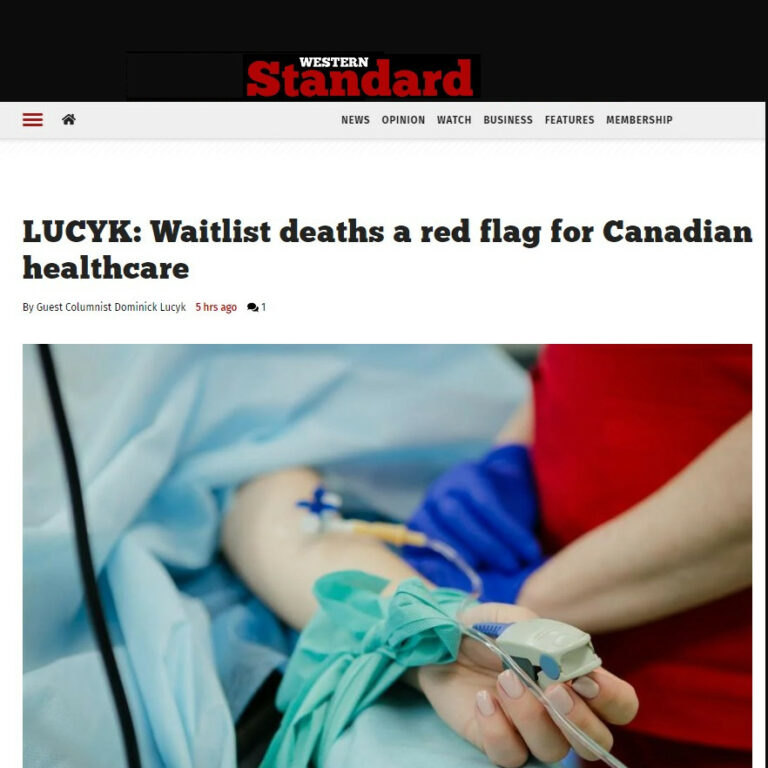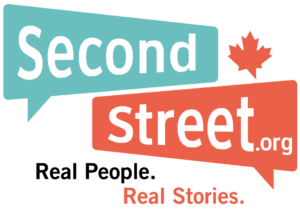WESTERN STANDARD COLUMN: Waitlist Deaths a Red Flag for Canadian Health Care

In Canada, the government essentially operates a monopoly on the healthcare services you can access.
With the exception of Quebec, Canadians are not allowed to pay for medically necessary health services or buy private health insurance to cover them. The state expects everyone to depend on it for care. What could go wrong?
Well, how about 14,000 people a year dying on waiting lists for surgery?
Obviously the answer is “yes,” but that’s not happening.
Consider the story of Jerry Dunham. The Redcliff, AB man died in June, 2020 while waiting for a pacemaker operation. Dunham waited 18 months after first feeling the symptoms of congestive heart failure until his operation was scheduled. But by the time it was his turn for surgery, the government had postponed the operation due to COVID. He died shortly afterwards, leaving behind two young children.
We know about Dunham’s story not because the government informed the public about its tragic mistake, but because Dunham’s family spoke out publicly. Time and time again, similar stories break in Canada because family members, not the government, disclose these major mistakes to the media.
Contrast this reality with what happens when private businesses make mistakes — governments often alert the media when a restaurant violates a government policy or when a worker is injured at a construction site. Imagine if the government held itself to the same standard?
The lack of accountability around waiting list deaths in Canada is why SecondStreet.org releases annual Died on a Waiting List reports. These reports cite government data — obtained by SecondStreet.org filing Freedom of Information requests nation-wide — that show the number of Canadians who died while waiting for surgery, a diagnostic scan or to see a specialist.
Last year’s report, which was released this past December, covers the period April 1, 2021 to March 31, 2022. It showed there were 13,581 waiting list deaths in Canada — covering a wide array of health services — everything from cataract procedures to cardiac cases and MRI scans.
Since that research was released, SecondStreet.org was able to release additional data.
For instance, new figures from Alberta show 48 Albertans died while waiting for surgery and 79 died waiting for a diagnostic scan. Unlike previous years, the Alberta government no longer releases details on the types of surgeries patients were waiting for at the time of their death.
In Ontario, the government disclosed 42% of the 1,417 patients who died while waiting for surgery were cataract cases. Patients would be unlikely to die from not receiving this surgery in a timely manner, but who wants to spend their final days walking around with cloudy vision? Ontario’s data did show 7% died waiting for cancer surgery and 2% died while awaiting neurosurgery.
The Winnipeg Regional Health Authority disclosed six patients died while waiting for heart surgery. Of the six patients, four had waited longer than the recommended wait time. Did long wait times contribute to any of those deaths? Again, the state does not report on such situations.
So what are the solutions to these problems?
First and foremost, accountability. The government should track this data carefully and disclose, like Nova Scotia does, how many patients died while waiting for potentially life saving surgery. In fact, a 2022 Leger poll commissioned by SecondStreet.org showed 66% of Canadians think provincial health ministers should have to hold a news conference each year and discuss the data publicly.
Second, real health reform could save lives and ease patient suffering. Another 2022 poll commissioned by SecondStreet.org found 62% of Canadians think our country should keep our public health care system, but allow the public to pay for surgery at private clinics if they so choose. This would not only reduce patient suffering, it would take pressure off our public system as some patients decide to pay privately.
To be clear, health reform is a complex topic and requires many reform options. But if we start with the two options above, we can improve accountability and outcomes for patients.
Dom Lucyk is communications director for SecondStreet.org, a Canadian think tank.
This column was originally published in The Western Standard on March 9, 2023.
You can help us continue to research and tell stories about this issue by making a donation or sharing this content with your friends. Be sure to sign up for our updates too!


